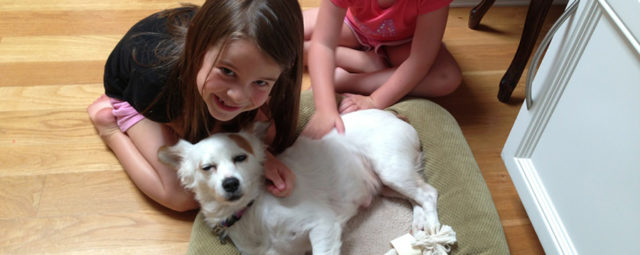As dog trainers we hear a plethora of different complaints from dog owners, ranging from dogs pulling on leash, to aggression, to reactivity, anxiety, fear and everything in between. The first thing out of our mouths is, “tell us what is going on.” The answer usually starts with, “My dog is doing [insert problem behavior here].”
It is a natural to focus on the dog when problem behaviors arise. They are the one exhibiting problem behaviors after all.
When starting down the road of a behavior modification training program, the first thing that we look at during our initial evaluation is YOU. Yes, we want to know what the dog is doing but, more importantly, we want to know what you are (or aren’t doing).
Let’s back up for a minute though and talk about the timing of when to start training. Life is busy…work, kids, commitments…all too often Fido takes the back seat. Sure, you noticed that he’s starting to pull a little on leash or react to dogs on leash or show signs of anxiety. But you are really busy, maybe after vacation or the holidays. Or maybe the behavior is “just a phase” and will go away.
Sorry to tell you, but those behaviors will not “just go away.” And if you are inadvertently rewarding the problem behavior, you are only going to strengthen that behavior and possibly create more bad behaviors.
With dogs, timing is EVERYTHING. The minute you notice unwanted behaviors, if you are not responding to what your dog is telling you at that moment, you are missing an opportunity, allowing the behavior to continue, and running the risk that it will worsen (and that risk is high). In serious behavioral cases if you do not address the issue immediately you are putting yourself and others around you (dogs and people) at risk.
By allowing the unwanted or unsafe behavior to continue, you are not only sending a mixed message to your dog, it’s showing your dog that you are an unbalanced, unsafe, inconsistent and unpredictable human pack leader. You wouldn’t follow an unstable leader, right? I certainly hope not. And neither will your dog.
So, what are we looking for when we meet you during our initial evaluation? This is by no means a complete list, but it’s a list of common leadership faults that we see.
- Pulling on leash, not walking with structure or allowing sniffing and peeing at free will).
- Unearned affection, food, treats, chews, toys, etc.
- No boundaries or structure.
- The dog is allowed to run in and out of the doors, crates, etc.
- Free feeding.
- Is rewarded for pushing or impatient behavior.
- Allowing attention demanding behaviors or demanding barking or whining.
- Owner does not control the start and stop of play time.
- Jumping up on furniture at own free will.
- Allowing possessive, guarding or bully behavior towards other dogs or people.
- Allowing fearful, nervous or anxious behavior
- Using inappropriate or poorly timed corrections
If you are dealing with problem behaviors, it’s time to take a look at yourself as your dog’s pack leader. What you allow will continue. While the concepts are simple, the implementation of them is not easy. As professional dog trainers in the Bay Area, we specialize in helping to create a synergy between you and your dog, helping you create the happy and balanced relationship that all dog owners strive for.
For any questions on our behavioral modification training program or if your dog is exhibiting any problem behaviors, please contact us.

